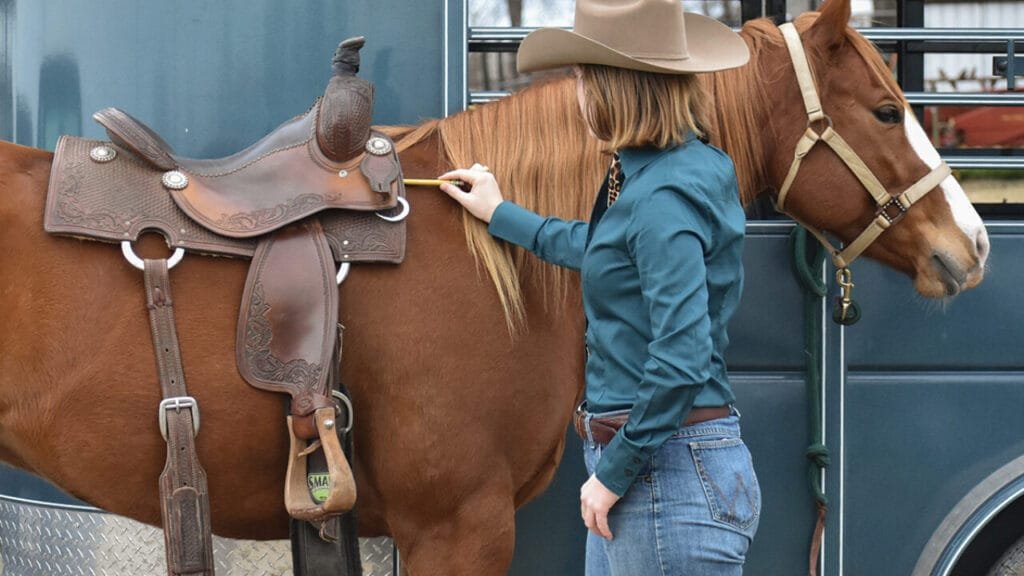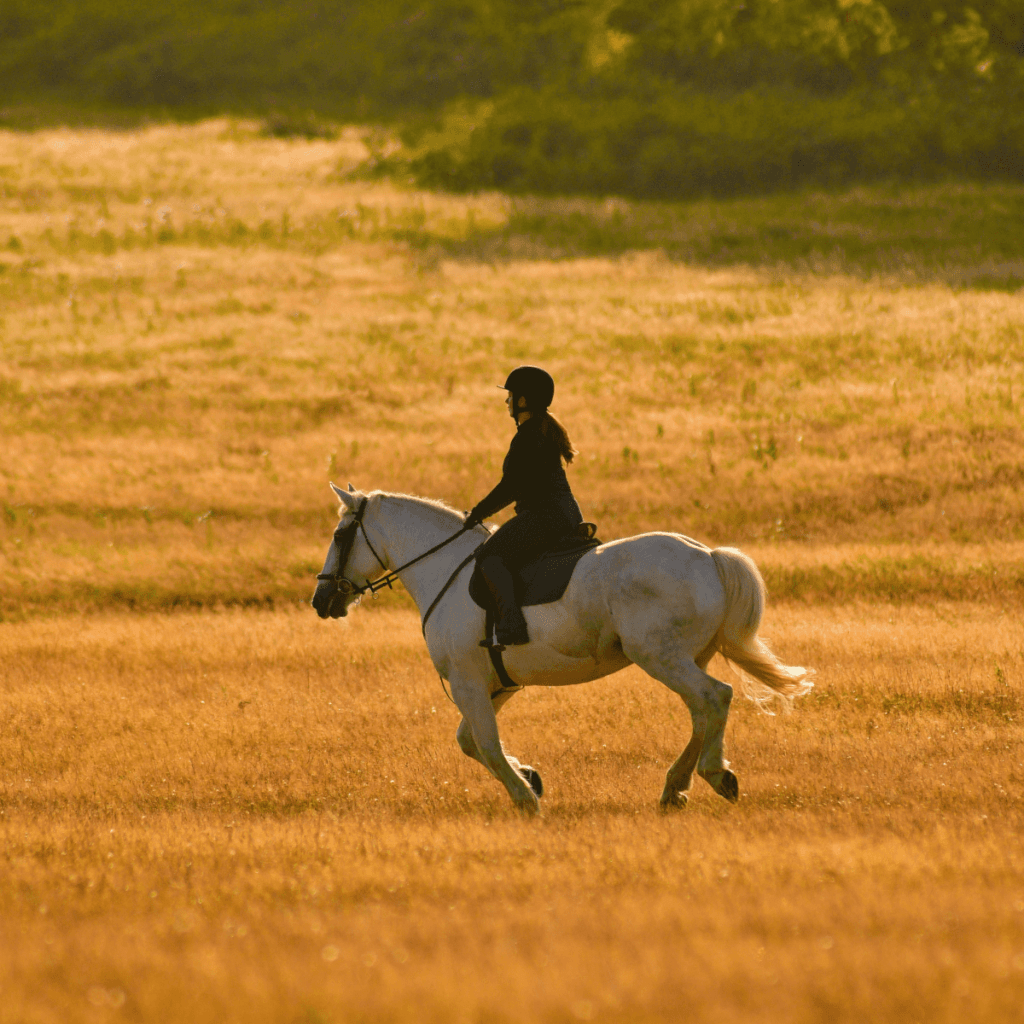choosing the correct seat size is only the beginning.
There are several other key features that impact the overall fit and comfort of the saddle. To ensure a saddle suits both you and your horse, it’s important to understand how factors like seat depth, seat slope, cantle slope, fork style, and fork angle all play a role in the saddle’s fit and functionality.
1. Seat Depth
Seat depth refers to how far the rider is “cradled” in the saddle. Saddles come in different depths, which can significantly impact comfort and stability during riding.
- Deep Seat: A saddle with a deep seat provides more of a pocket for the rider, which helps keep them in place during activities that require more control or stability, such as roping, barrel racing, or trail riding over rough terrain. This can make the saddle feel more secure, but may limit freedom of movement.
- Shallow Seat: A shallower seat allows for more freedom and movement. This type of saddle is commonly chosen for disciplines like reining or cutting, where quick movements and responsiveness are important. It offers less restriction, giving the rider more control to move with the horse.
2. Seat Slope
The slope of the saddle seat refers to the angle from the hand-hold or pommel (front of the saddle) toward the cantle (back of the saddle).
- Flat Slope: A flatter seat can feel more comfortable for riders who prefer to sit more upright.
- Steep Slope: A steeper seat slope can position the rider in a more forward-leaning position, which can be beneficial in certain disciplines that require the rider to lean forward or engage more with the horse’s movements.
3. Cantle Slope
The cantle is the back portion of the saddle, and its slope can vary greatly. It provides support for the rider’s lower back and contributes to the overall feel of the saddle.
- High, Straight Cantle: A straight, high cantle offers more support and is often preferred for trail riders or those looking for added security. This type of cantle creates a deeper seat and more back support.
- Mild or Steep Cantle: Some Western saddles feature a more gently sloping cantle, which can provide a more open seat and allow for greater movement. A more steep cantle may provide better support but still feels more open than a high cantle design.
4. Cantle Dish
The cantle dish refers to the shape and depth of the cantle, particularly the front side. A saddle with a “dished” cantle features a recess or curve that dips inward, giving the rider more support and a more secure feeling.
- Flat Cantle: A flat cantle is typically seen in older-style saddles or in models that are designed to allow more freedom of movement.
- Dished Cantle: A deeper, dished cantle (sometimes an inch or more deep) helps cradle the rider’s lower back and keeps them centered in the saddle. This can be an excellent choice for long hours of riding or for activities where stability is key.
5. Fork Style
The fork is the front part of the saddle, which supports the horn and holds the saddle tree together. The shape and style of the fork can affect how the saddle fits your body and how the rider feels in it.
- Wide Swell: A saddle with a wide swell offers more support for the rider’s thighs and helps keep them in a stable position. This style is more common in trail saddles and ranching saddles.
- Slick Fork: A slick fork saddle has less swelling around the front, making it a bit more open and allowing for more freedom of movement. This is common in disciplines like reining or cutting, where quick, agile movements are required.
6. Fork Angle
The fork angle refers to the way the fork angles away from the rider. This is important in determining how comfortable the saddle is for different body types and riding styles.
- Straight Fork: A saddle with a straight fork will generally position the rider more upright and offer a more traditional, secure feel.
- Angled Fork: Saddles with angled forks can feel more open, which may suit riders who prefer a more free-flowing position.
Why Fit Matters
Each of these measurements can impact the way a saddle fits a rider, and unfortunately, there’s no standardization when it comes to these features. Saddle manufacturers may have their own interpretations of seat depth, cantle slope, or fork styles, which means each saddle can fit a little differently, even if the seat size is the same.
The most accurate way to determine if a saddle will fit you is to try it out. Sitting in the saddle will give you a better sense of how each of these elements feels and how they align with your body. In particular, a saddle that fits well should allow you to ride comfortably for extended periods, with your legs properly aligned, your lower back supported, and your seat feeling secure without being cramped.




